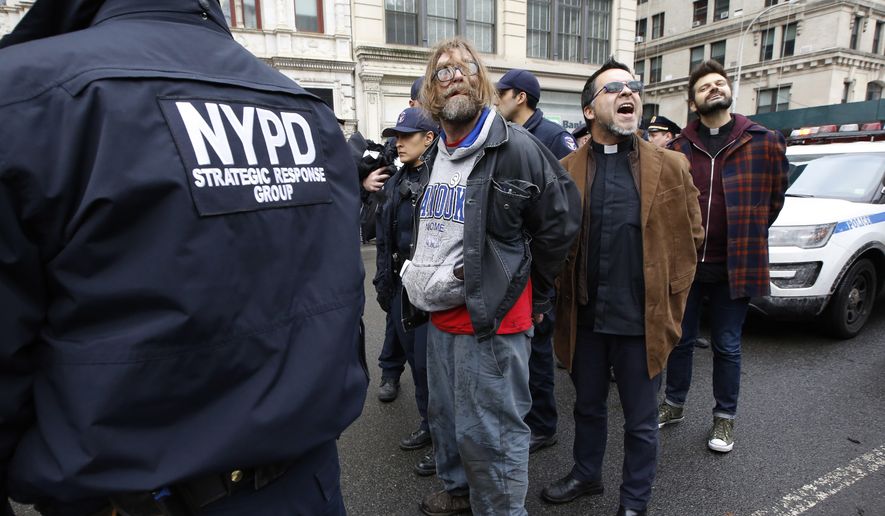Dozens of illegal immigrants shielded by New York City’s sanctuary policy this year have already gone on to be arrested for still other crimes including drug and theft, the federal government said Friday, looking to pressure the city to change.
U.S. Immigration and Customs Enforcement flagged more than 440 people in New York’s jails as deportation targets from January to April.
But city officials would only hold those the mayor’s office deemed to have committed egregious crimes, ICE said, meaning dozens were shielded from deportation and set free.
Of those, “hundreds” were released and 40 have already been arrested for new crimes, said ICE, a branch of Homeland Security.
Among them is a 43-year-old Chinese man who was arrested in March for a drug offense, released back into the community then arrested for another felony drug charge a month later. A 28-year-old Salvadoran man arrested in March for assault was released, and a month later he was back behind bars for a robbery arrest.
“Simply put, the politics and rhetoric in this city are putting its own communities at an unnecessary risk,” said Scott Mechowski, acting field office director for ICE’s deportation office in New York.
A spokesman for New York Mayor Bill de Blasio said they were striking a balance with their policy.
“New York City will work with federal partners in the interest of public safety, but not to be an arm of immigration enforcement,” said Matt Dhaiti, a spokesman in the mayor’s Office of Immigrant Affairs.
Mr. de Blasio signed legislation several years ago listing the crimes where the city is willing to cooperate with deportation officials. He said anything involving violence or use of a weapon, major drug offenses or terrorism-related activity can result in someone being turned over to ICE, as long as the crime was recent.
Asked for comment, New York Mayor Bill de Blasio’s office demanded questions be sent by email, then didn’t immediately respond when a request was sent.
Mr. de Blasio has in the past defended the policy and the list of crimes where he says the city is willing to cooperate with deportation officials. He said anything involving violence or use of a weapon, major drug offenses or terrorism-related activity can be turned over to ICE, as long as the crime was recent.
The mayor said he doesn’t want illegal immigrants who commit what he deemed lower-level offenses to end up deported, though.
Sanctuary policies vary depending on the city, but at root they all involve some refusal to cooperate with federal officials looking to deport immigrants.
The Obama administration’s official policy was also opposed to sanctuary cities, though they took a more conciliatory approach, trying to reach agreements about which criminals would be turned over. The Trump administration’s approach has been more combative, and states and localities have responded by embracing still-more sanctuary policies.
ICE officials say if the goal is to shield rank-and-file illegal immigrants, sanctuary policies backfire. Rather than having officers in prisons and jails targeting criminals, the officers go looking for them out on the streets — and if they encounter other illegal immigrants along the way, they try to deport them too.
ICE officers also face violence when they have to go collect someone from the community.
In one 2017 arrest, a man from Portugal who immigrated to the U.S. illegally was released under a Massachusetts community’s sanctuary policy. When ICE officers went to track him down, they say he tried to flee, then began resisting arrest and inciting onlookers, shouting “do not let immigration take me!”
At one point he seemed to reach toward one of the officers’ holstered weapons, and by the time the struggle was over he’d bitten that officer several times.
“I fought because I didn’t want to go to jail. I didn’t want to be deported,” he later told the officers.
He was sentenced last month to 10 months in prison.
• Stephen Dinan can be reached at sdinan@washingtontimes.com.




Please read our comment policy before commenting.